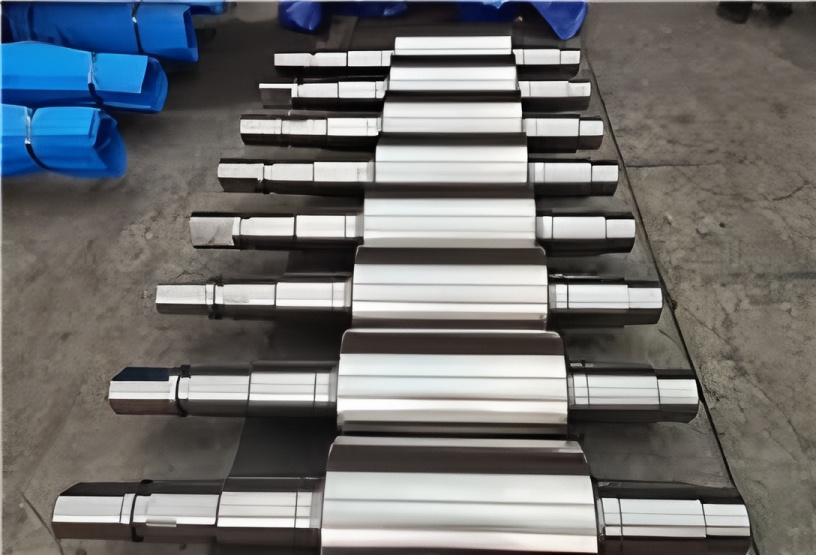The increasing demand for higher output and quality in hot-rolled strip necessitates stricter requirements for the application and management of backup rolls. It is essential to study their usage and management strategies to extend service life and prevent production and quality issues caused by roll-related incidents.
Backup Rolls
Backup rolls provide critical support to work rolls during rolling operations. Given their extended service life and continuous exposure to alternating bending stresses, these rolls must exhibit high toughness and fracture resistance. An optimal combination of wear resistance, spalling resistance, and crack resistance is essential.
Based on experimental and operational experience, a chromium content of around 5% is considered ideal for backup roll composition. Consequently, most hot-rolled strip mills now employ forged Cr5 backup rolls.
Backup Rolls
Strip shape is a crucial quality attribute, significantly influenced by roll wear—including both backup and work rolls. Since backup rolls have a longer replacement cycle than work rolls, severe wear can affect work roll bending behavior and ultimately strip shape accuracy. Roll wear remains challenging to quantify and control in production.
Backup Roll Wear
Roll wear follows general tribological principles, involving macroscopic and microscopic dimensional changes, ultimately leading to reductions in roll diameter.
Backup roll wear results from relative sliding and rolling friction against work rolls. The interaction with the work roll surface and carbides abrades the backup roll surface. Wear extent depends on roll material, surface hardness, roughness, inter-roll pressure, relative slip, and rolling distance.
Extensive measurements indicate that the lower backup roll experiences greater wear than the upper roll. This is attributed to cooling water containing oxide scale impacting the lower roll, worsening its operating conditions and accelerating wear.
To compensate for backup roll wear, the following measures are implemented:
Rolling Schedule Control: New rolls should process wider, thinner strips with tight tolerance requirements. As wear progresses, product specifications should transition to narrower, thicker, and lower-tolerance strips.
Reduction Adjustment: Compensate for wear by reducing the amount of reduction per pass.
Cooling Control: Modify the roll temperature profile by gradually increasing edge cooling water to adjust the thermal crown and counteract wear effects.
The following section focuses on compensating wear through roll profile design.
Backup Roll Profile Design
Backup roll wear is a critical concern for rolling technicians. Accurate wear measurement is essential to determine service life, actual wear amount, and wear distribution—providing vital data for shape control and product quality.
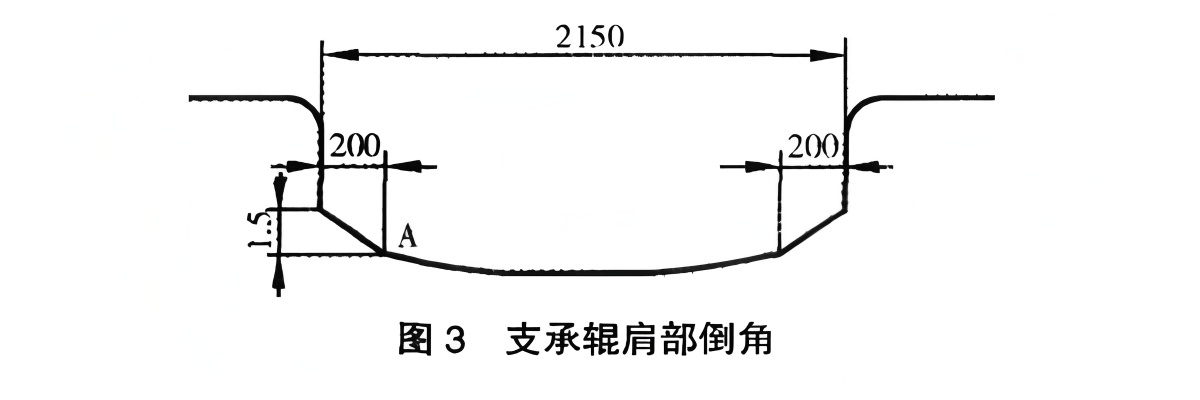
(1) Profile Design
Extensive data analysis revealed that flat or sinusoidal backup roll profiles often lead to uneven wear after use, especially in downstream stands, complicating shape control. After experimentation, switching to a “sixth-power” curve profile significantly improved wear uniformity and simplified shape control (see Figure 1). This profile ensures consistent contact between the backup and work rolls, better retains the roll shape after wear, and maintains the original design profile (see Figure 2).
(2) Edge Chamfer Design
While an optimal profile alleviates most wear-related issues, inadequate or improper edge chamfering can cause harmful contact stress at the roll shoulder. Cyclic pressure may lead to spalling, premature scrapping, or production incidents. Addressing stress concentration with a suitable transition curve—such as compound circular arc chamfering within a 200 mm edge region and 1–2 mm radial depth—effectively reduces stress and minimizes harmful contact, preventing roll failures.
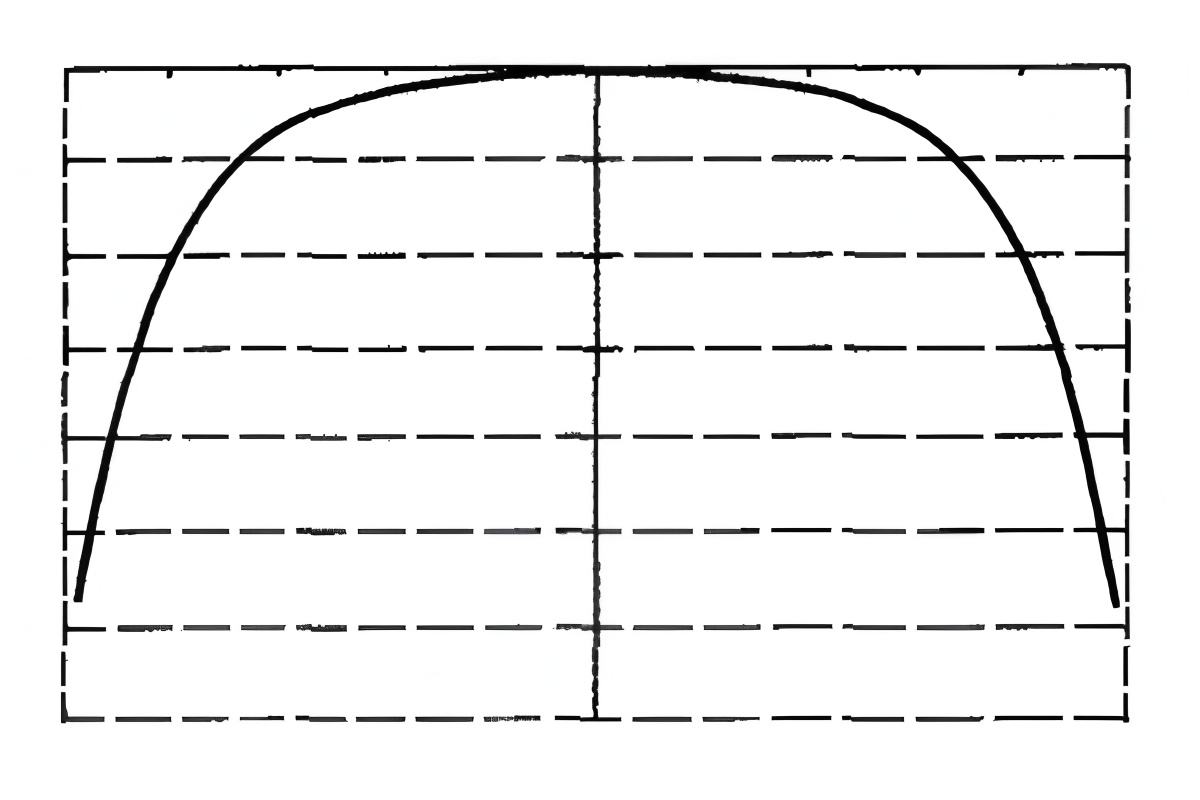
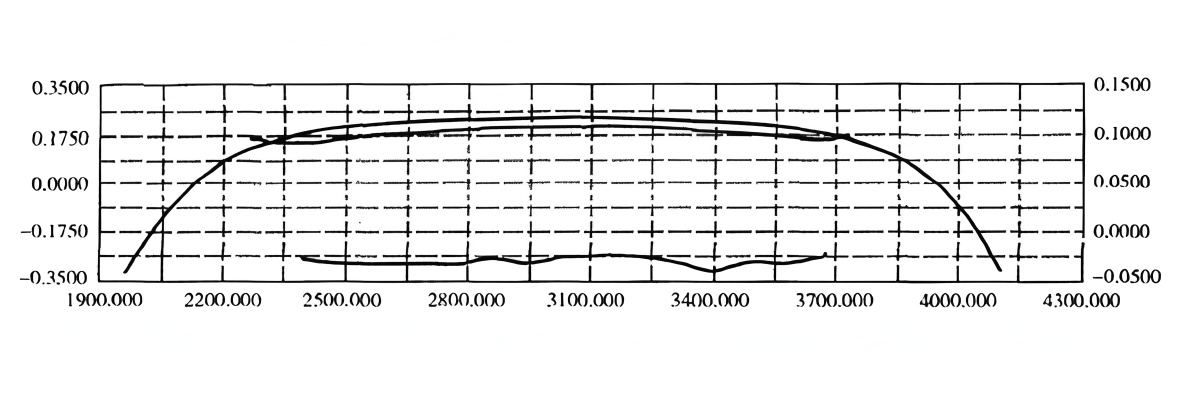
Backup Roll Management
Effective management is crucial for maximizing backup roll service life and minimizing costs. Management strategies should be tailored to the specific products and mill conditions, and continuously refined.
Incoming Inspection
Ultrasonic testing of new backup rolls is essential. Manufacturing defects, however minor, can lead to serious failures. Early defect detection allows for appropriate measures—such as targeted usage plans—to prevent defect propagation and avoid accidents. Defect location, depth, and orientation should be documented to facilitate tracking during use.
Normal and Abnormal Removal Management
Normally removed rolls should be ground according to predefined amounts after complete cooling to prevent profile distortion from residual heat. Regular surface hardness checks help adjust grinding depth to remove work-hardened layers and prevent spalling. Abnormal removals (e.g., due to cobbles or sticking) require reassessment of grinding depth.
Combined ultrasonic and eddy current testing should locate and depth-size defects. Incremental grinding with real-time inspection ensures complete crack removal while minimizing material loss. Although time-consuming, this approach reduces abnormal roll consumption and prevents latent fatigue cracks from causing failures during operation.
Mills should be equipped with inspection tools—ultrasonic, eddy current, magnetic particle, and dye penetrant testing—to detect internal and surface defects. Hardness testing ensures uniform surface hardness and prevents defective rolls from being used. The replacement cycle should be adjusted based on shoulder hardening, ensuring hardness increase does not exceed 4 HS. The work-hardened layer must be entirely removed during grinding, restoring the roll to its original hardness.
Roll Record Management
Comprehensive roll usage records, especially nondestructive testing logs, must be maintained. Statistics show that most in-service failures involve rolls that were previously repaired and reused.
Regular eddy current, surface ultrasonic, and joint micro-crack inspections are necessary. Backup rolls involved in rolling incidents must undergo 100% crack inspection. Operator skill should be continuously improved to reduce missed detections.
These measures help prevent in-service failures, extend service life, and reduce consumption.
Backup Roll Failure Modes and Prevention
Common failure modes include body spalling, edge spalling, neck fatigue fracture, and stress fracture. These failures shorten service life and necessitate premature scrapping. Below is an analysis of common failures and preventive measures:
Backup Roll Spalling
(1) Uneven wear between backup and work rolls can cause protruding roll ends, increasing edge contact stress. Repeated plastic deformation under stress exceeding the material’s yield limit initiates micro-cracks that propagate into spalling.
(2) Cyclic rolling contact stress induces work hardening. Spalling occurs when superimposed stress exceeds the material’s yield limit, causing micro-crack growth. A hardness increase exceeding 4 HS indicates spalling risk. The solution involves removing the hardened layer to prevent micro-crack initiation.
Micro-cracks are challenging to detect during use. Inadequate grinding allows cracks to propagate upon re-use, leading to spalling. Long service periods result in U-shaped wear profiles, increasing edge stress and alternating shear stress, promoting localized cracking and eventual spalling. Spalling typically manifests as small fragments in the contact area.
Prevention of Backup Roll Failures
(1) Work Hardening Monitoring: Test roll surface hardness after machining. If hardness increases by more than 4 HS, increase grinding depth to remove the hardened layer and restore original hardness.
(2) Fatigue Crack Monitoring: Use magnetic particle, penetrant, or ultrasonic testing to confirm crack removal. Increase grinding depth as needed to eliminate fatigue layers.
(3) Replacement Cycle Adjustment: Base the replacement cycle on hardness changes and nondestructive testing results. Long-term experience helps establish rational replacement and grinding regimes to prevent contact fatigue cracks.
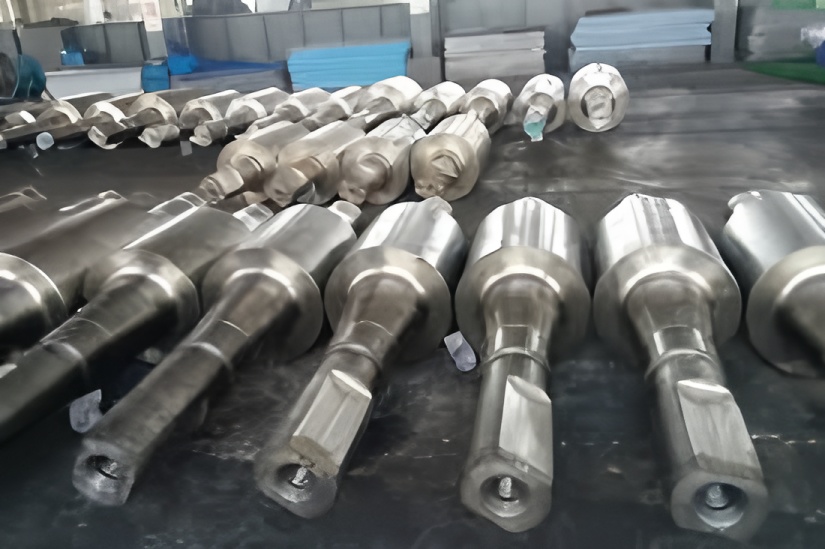
Conclusion
The performance of backup rolls is evaluated based on incident rates and rolling indicators. With energy conservation and consumption reduction being key goals in steel production, improving the management and application of backup rolls is essential.
In summary, achieving the expected scrap diameter for backup rolls requires diligent flaw detection, usage management, and operational practices. Minimizing incidents and enhancing roll utilization will ensure smoother production processes and higher cost efficiency.

